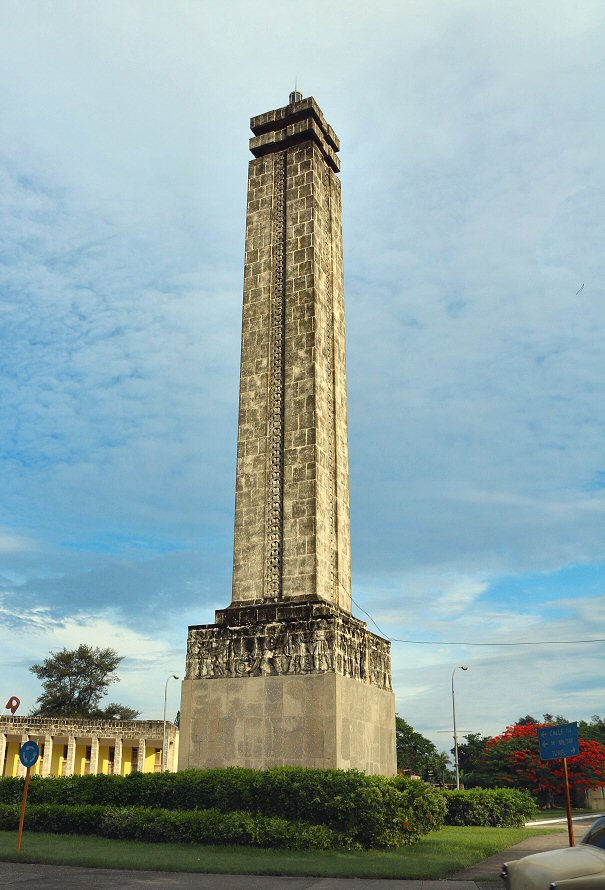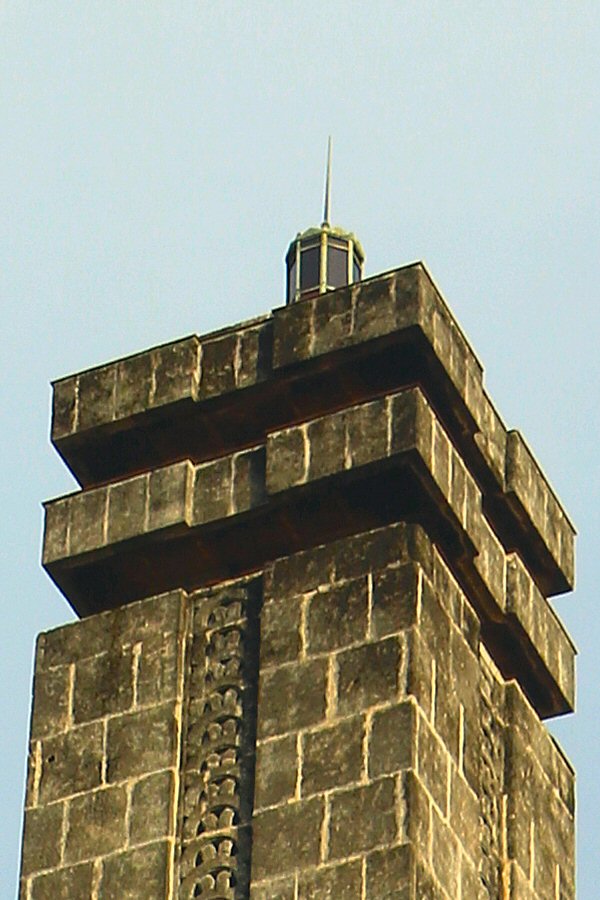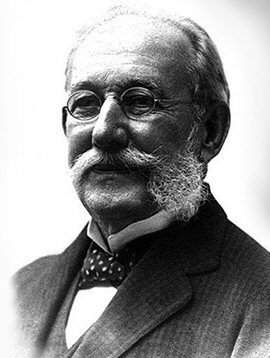
The Obelisco de Mariano is located at the intersection of the Avenida 31 with the 100th street.

 The
Obelisco de Mariano is the most representative and symbolic
monument of Mariano, a municipality of Havana that lies
about 10 km southwest of the Old Havana. It is erected in
the center of the ellipsoid Finlay square (or Marianao
Plaza), that facilitates the transit between the Aveinida 31
(former Columbia road) and the 100th street (former Menocal
Avenue).
The
Obelisco de Mariano is the most representative and symbolic
monument of Mariano, a municipality of Havana that lies
about 10 km southwest of the Old Havana. It is erected in
the center of the ellipsoid Finlay square (or Marianao
Plaza), that facilitates the transit between the Aveinida 31
(former Columbia road) and the 100th street (former Menocal
Avenue). In 1944, a roundabout with an obelisk in its
center, was built in commemoration of the military coup
d’état in 1933 in front of the main entrance of the Columbia
camp. The square and the obelisk was inaugurated on
September 4, 1944, referring to the date of military coup
d’état. Thus, the square was called as Plaza Cívica 4 de
Septiembre.
In 1944, a roundabout with an obelisk in its
center, was built in commemoration of the military coup
d’état in 1933 in front of the main entrance of the Columbia
camp. The square and the obelisk was inaugurated on
September 4, 1944, referring to the date of military coup
d’état. Thus, the square was called as Plaza Cívica 4 de
Septiembre.

The
people of Havana did not forget the contribution
of Carlos J. Finlay
(1833-1915), the eminent scientist in their life
and erected several monuments to his memory.
One of his monuments
is a bronze plaque on a stone wall, showing his
image with the shield of the Lions Club of
Marianao. It is located at the entrance of the
47th street in the neighborhood of Kohly, just
after the exit of the Almendares bridge. It is
the work of the Cuban sculptor Mario Santí
García and it was erected by the Lions Club of
Marianao in 1947. The place is far from Marianao,
but most of the wealthy and aristocratic
families, the promoters of the monument, that
were living in this coveted neighborhood, were
the members of the Lions Club of Marianao.
At the intersection
of the street 90-A and the 61st street in the
Pogolotti neighborhood, there is the Parque
Lazear. where you will see a stone wall. On this
stone wall, there are several bronze images of
Carlos J. Finlay and some of his collaborators,
like Walter Reed, Lazear y Otros, Ramón Claudio
Delgado Amestoy, among others. If you are sure
to visit this park that consists of a few
benches and the commemorative wall in a
neighborhood, where it is difficult to find any
street sign, it is recommended to take first the
100th street after the obelisk until the corner
of the street 61, and then proceed to the left
until you will find the park that is about 750
meters far from the 100th street.
The park very close
to the obelisk, at the intersection of the 31st
and the 82nd streets, is called Finlay Park.
Once the place was occupied by the Lions Club of
Marianao; today it is the Alejandro García
Caturla Music School.
There are two parks
more dedicated to Finlay: Carlos J. Finlay Park
on the Padre Varela street close to the Modern
Partagas Cigar Factory, and the other Carlos J.
Finlay Park in front of the Museo Histórico de
Las Ciencas Carlos J. Finlay on the Cuba street,
where it intersects with the Amargura street.
In 1980’s, when the
construction works of the Panama Channel was
delayed because of the high mortality of the
staff due to yellow fever, the studies of Finlay
improved the situation considerably, so that the
administration of the channel erected a plaque
to pay homage to Dr. Finlay because of his huge
contribution to the improvement of the
working conditions.
Cuba, Spain and
Argentina celebrate December 3, the birthday of
Dr. Finlay, as the Doctor’s Day.